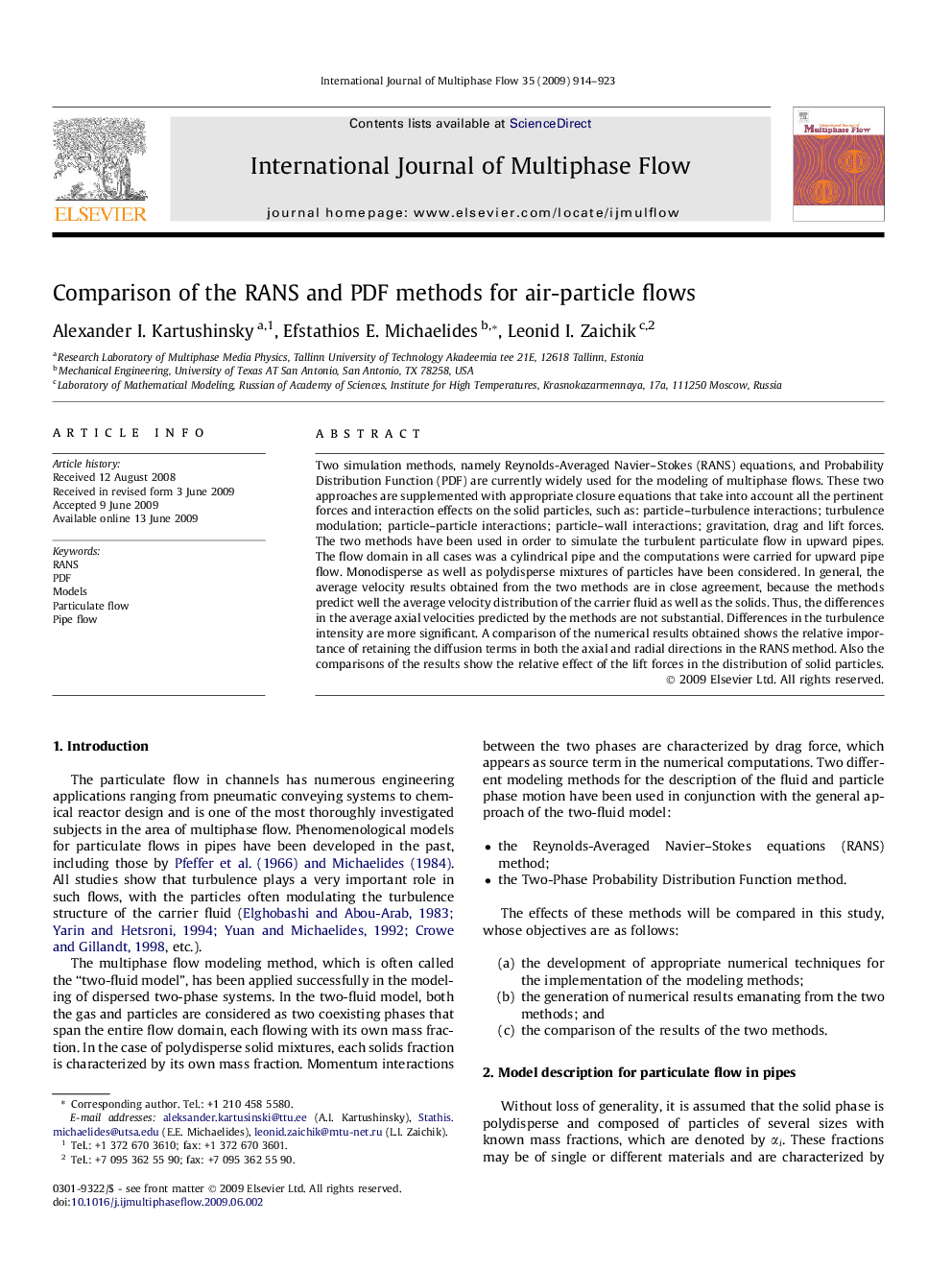| Article ID | Journal | Published Year | Pages | File Type |
|---|---|---|---|---|
| 667454 | International Journal of Multiphase Flow | 2009 | 10 Pages |
Two simulation methods, namely Reynolds-Averaged Navier–Stokes (RANS) equations, and Probability Distribution Function (PDF) are currently widely used for the modeling of multiphase flows. These two approaches are supplemented with appropriate closure equations that take into account all the pertinent forces and interaction effects on the solid particles, such as: particle–turbulence interactions; turbulence modulation; particle–particle interactions; particle–wall interactions; gravitation, drag and lift forces. The two methods have been used in order to simulate the turbulent particulate flow in upward pipes. The flow domain in all cases was a cylindrical pipe and the computations were carried for upward pipe flow. Monodisperse as well as polydisperse mixtures of particles have been considered. In general, the average velocity results obtained from the two methods are in close agreement, because the methods predict well the average velocity distribution of the carrier fluid as well as the solids. Thus, the differences in the average axial velocities predicted by the methods are not substantial. Differences in the turbulence intensity are more significant. A comparison of the numerical results obtained shows the relative importance of retaining the diffusion terms in both the axial and radial directions in the RANS method. Also the comparisons of the results show the relative effect of the lift forces in the distribution of solid particles.
